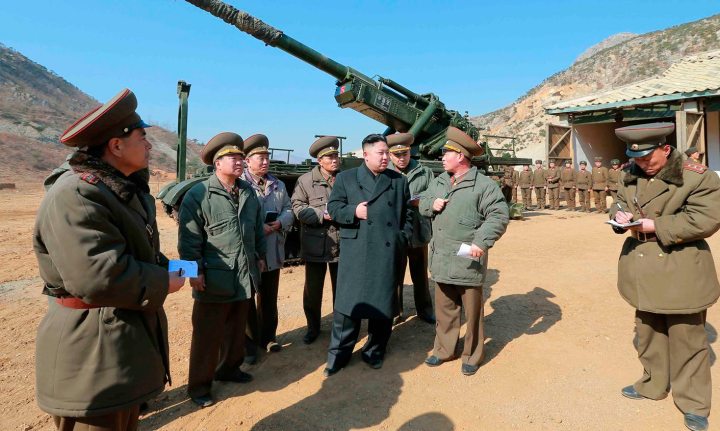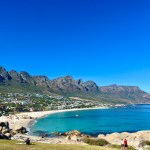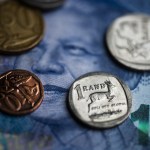Newsdeck
North Korea Can Likely Revive Reactor In 6 Months, Needs Years For More Bombs

North Korea can probably restart a mothballed plutonium-producing reactor in six months if it is determined to do so and the site has suffered no major structural damage, but it may take years to produce significant new atom bomb material. By Louis Charbonneau.
Pyongyang announced on Tuesday that it would revive the aged Yongbyon five-megawatt research reactor that yields bomb-grade plutonium, but stressed it was seeking a deterrent capacity and did not repeat recent threats to attack South Korea and the United States.
Several nuclear experts familiar with North Korea’s program said it would probably take the North Koreans about half a year to get the Yongbyon research reactor up and running, provided it has not suffered significant damage from neglect.
The decision to restart the reactor was the latest chapter in an escalating crisis that erupted after Pyongyang was hit with U.N. sanctions for conducting a third nuclear test in February, and the United States and South Korea staged military drills that North Korea viewed as “hostile.”
Driving those threats home, the North said it has “ratified” a merciless attack against the United States, potentially involving a “diversified nuclear strike.”
The Yongbyon reactor has been technically out of operation for years. But Siegfried Hecker – a Stanford University nuclear scientist who is believed to have been the last Westerner to visit the Yongbyon nuclear complex – said the Yongbyon research reactor has been on standby since July 2007.
“If they restart the reactor, which I estimate will take them at least six months, they can produce about six kilograms of plutonium (roughly one bomb’s worth) per year,” Hecker said in an interview published on Tuesday on a Stanford website.
He said that it would take the North approximately three to four years before it could get another 12 kg (26 lbs) of plutonium, which would suffice for two more weapons.
Isolated North Korea occasionally lets nuclear experts like Hecker into the country, most likely to persuade them that its nuclear capabilities are not imaginary, U.N. diplomats and officials say.
Hecker added that when he last visited North Korea in 2010, he estimated that the country had a stockpile of 24 to 42 kg (53 to 93 lbs) of plutonium, roughly four to eight bombs worth. If the country’s February nuclear test used plutonium – which is not clear – the stocks would be about five to six kg lower, he said.
North Korea has repeatedly threatened to use nuclear weapons to attack the United States and its bases in South Korea, but Hecker said he was skeptical about Pyongyang’s ability to hit targets on U.S. or South Korean territory.
Olli Heinonen, former head of the U.N. International Atomic Energy Agency’s (IAEA) safeguards department, told Reuters he had a similar prediction, though he said it was possible North Korea could have the research reactor running in less than six months.
“We don’t know how much preparatory work they’ve done,” said Heinonen, who is currently at Harvard University and has visited North Korea and met with North Korean scientists.
Both Hecker and Heinonen said North Korea could most likely restart the reactor without any foreign assistance, despite U.N., U.S. and other sanctions aimed at curtailing its ability to purchase nuclear and missile technology.
A U.S. official concurred with Hecker and Heinonen.
“North Korea’s assertion that it intends to bring Yongbyon back on line can’t be easily written off as an insurmountable hurdle,” the official said on condition of anonymity.
Mark Fitzpatrick of the International Institute for Strategic Studies think tank in London, however, said there was a possibility that the Yongbyon reactor has been rendered inoperable for unknown reasons.
“It’s been a mystery to me why they haven’t started it up before this,” he said. “The most logical answer is that they couldn’t … But there’s no certainty here.”
If the reactor is functional, Fitzpatrick said, the half-year timeline for restarting it made sense.
URANIUM ENRICHMENT
IAEA spokeswoman Gil Tudor said North Korea’s decision to restart Yongbyon was “another deeply regrettable development, which is in clear violation of U.N. Security Council resolutions.”
The Security Council has repeatedly sanctioned North Korea for its nuclear tests and repeated missile launches, and ordered it to abandon both its nuclear and missile programs.
Heinonen said North Korea has already mothballed and restarted the five-megawatt graphite-moderate research reactor before. It shut down the plant after signing the “Agreed Framework,” a 1994 deal with the United States under which Pyongyang agreed to freeze Yongbyon in exchange for heating oil and construction of newer light-water reactors.
Pyongyang began to restart the reactor in late 2002 after Washington accused it of secretly developing a parallel uranium enrichment program in violation of the 1994 deal. Washington ceased aid to the North and Pyongyang accused it of reneging on its promise to build the light-water nuclear reactors.
North Korea then expelled all inspectors from the IAEA and in 2003 withdrew from the nuclear Non-Proliferation Treaty. In 2006, it tested its first nuclear device, using plutonium from Yongbyon, followed by two more in 2009 and earlier this year.
Certain technical challenges await the North Koreans. In 2008 they destroyed the Yongbyon reactor’s cooling tower as a confidence-building step in U.S.-led multilateral negotiations aimed at reducing tensions on the Korean peninsula.
But the reduction in tensions was short lived. Six-nation aid-for-disarmament talks between the two Koreas, China, Russia, Japan and the United States have been stalled for years.
Heinonen said that either North Korea must build a new cooling tower or create an underground cooling plant, like one that was under construction at a site in Syria that Israel bombed in 2007. Western intelligence sources have said North Korea helped build the Syrian reactor, which the government of President Bashar al-Assad has said was not a nuclear site.
David Albright, a former weapons inspector and head of the Washington-based Institute for Science and International Security think tank, said it was important not to underestimate the nuclear capabilities of the North Koreans or their determination to live up to their word.
“North Korea huffs and puffs a lot, but underneath that they pretty much do as they say,” said Albright, who met with North Korean nuclear scientists in Pyongyang in 2011. “They have been saying they want to improve the quality of their nuclear weapons and they may very well do that.”
As well as reviving the reactor at Yongbyon, the North’s only known source of plutonium for its nuclear arms program, Pyongyang’s official KCNA news agency said a uranium enrichment plant would be put back into operation.
Hecker, who visited the enrichment plant in 2010, said North Korea has a good safety record for its five-megawatt research reactor, but he voiced concerns about the new plant it intends to construct.
“I am much more concerned about the safety of the new light-water reactor they are building,” he told Reuters without elaborating. DM
Photo: North Korean leader Kim Jong-Un (C) visits a long-range artillery sub-unit of the Korean People’s Army Unit 641, whose mission is to strike Baengnyeong Island of South Korea in the western sector of the front line March 11, 2013 in this picture released by the North’s official KCNA news agency in Pyongyang March 12, 2013. REUTERS/KCNA





















 Become an Insider
Become an Insider